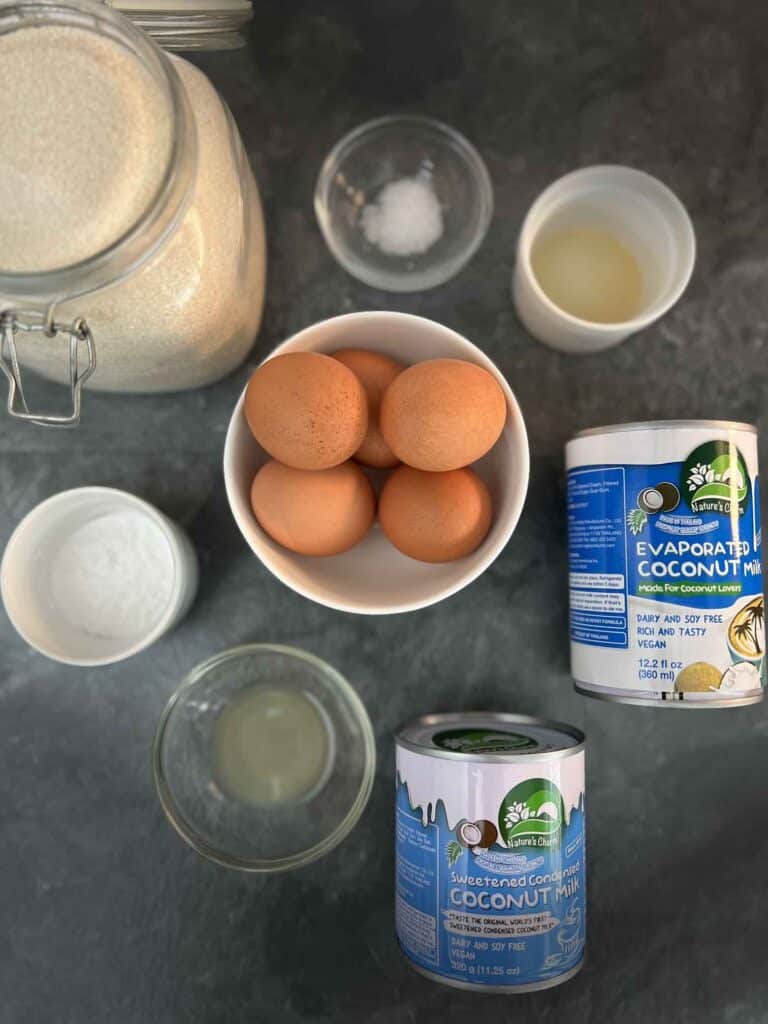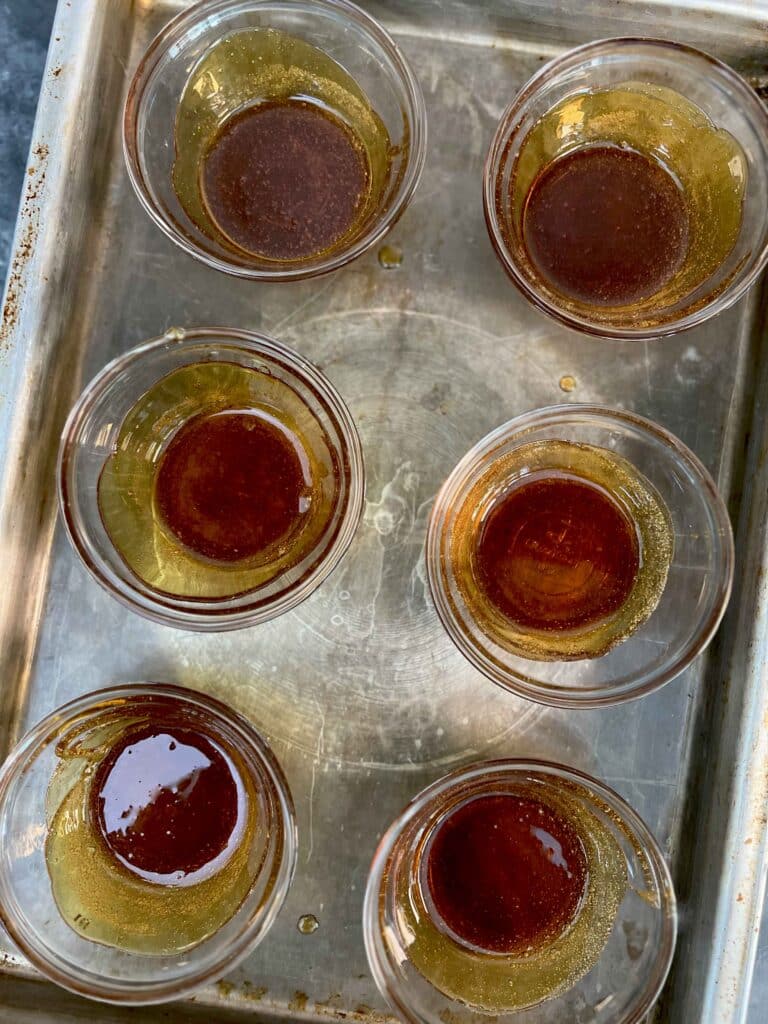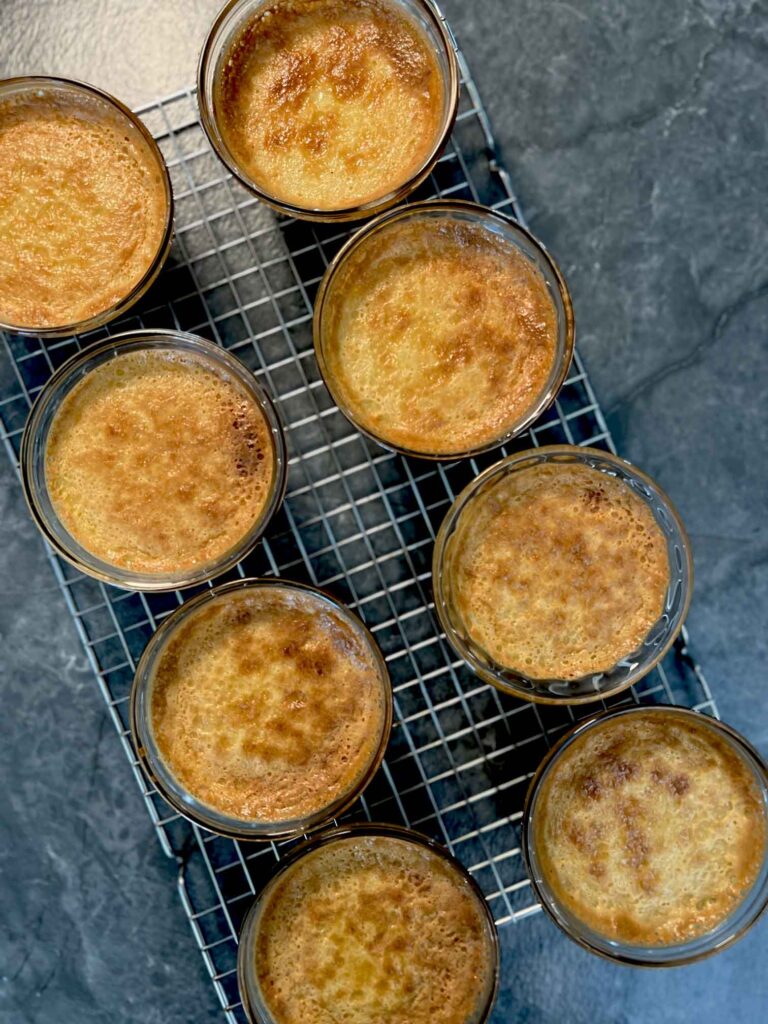
Classic Flan, that's dairy-free. You heard me. Dairy-free.
¡Hola! Today, I’m bringing you something super special that will make your abuelita proud, even if she’s scratching her head, wondering how you made flan without leche. That’s right—we’re diving into the delicious, creamy world of dairy-free flan. Yes, it’s possible, and yes, it’s amazing!
Classic Flan, with its smooth, creamy texture and rich caramel flavor, is a dessert that holds a special place in many Puerto Rican hearts. It’s more than just a dessert; it’s a symbol of family, tradition, and cultural pride. Growing up in a Puerto Rican household, flan was a staple at every celebration, from birthdays to holidays, and every family gathering in between. The traditional flan, made with eggs, milk, and sugar, has been passed down through generations. I’m sharing a version that is both familiar and new. This dairy-free flan stays true to its roots while accommodating modern dietary needs.
Flan is as Puerto Rican as arroz con gandules or pasteles. Traditionally, a classic flan is made with a mixture of condensed milk, evaporated milk, eggs, and sugar. The process involves creating a caramel sauce that lines the dish, followed by a custard mixture that is poured on top and baked until set. The result is a smooth and creamy dessert, with a deep, golden caramel sauce that oozes over each slice.
In our home, my mother would melt the sugar for the caramel, watching over it to ensure it didn’t burn. Then, the eggs and milk were combined in a blender. After the custard mixture was ready, the flan was baked in a baño de maría, a water bath, for an even cook. Once the flan has cooled, it's was time to unmold the flan. Removing the flan can be a little nerve-racking. Caramel can go everywhere. The flan can break or come apart after flipping it. All you can do is hold your breath and flip it. Luckily, my mom was a pro at flipping flans. The best part is getting to taste your creation.
As much as I love traditional flan, my dietary restrictions kept me from enjoying it. At first, I was hesitant. Flan, after all, is defined by its creamy texture, and I worried that a dairy-free version might lack the richness that makes it so special.
The key to a successful dairy-free flan is finding the right substitutes that mimic the texture and flavor of the original. For the condensed milk, I used coconut condensed milk, and for the evaporated milk, I used evaporated coconut milk, which is lighter but still provides the necessary creaminess. The eggs remain unchanged—they’re essential for achieving the custard’s texture. Lastly, I added Tapioca flour to ensure a creamy texture.

Alright, let’s get to the good stuff. Here’s what you’ll need:

Creating perfect caramel can feel a bit tricky, but with these tips, you'll nail it every time:
With these tips, your caramel will be the perfect base for your dairy-free flan, adding that essential layer of deep, sweet flavor.

The first time I made dairy-free flan, I was nervous. Would it taste right? Would it live up to the memories of my childhood? The answer was a resounding yes. The flan was just as rich, creamy, and indulgent as the traditional version, with a subtle hint of coconut that added a new dimension of flavor.
This dairy-free flan has become a new tradition in my home. It’s a dessert that I’m proud to serve my family.
For many of us, food is a way to stay connected to our culture and our families. It’s a way to honor the past while also making it our own. This dairy-free flan is my way of doing just that. It’s a dessert that’s as Puerto Rican as they come, but with a modern twist. The best part is, I can still eat flan!
If you're looking for more Puerto Rican flavors, try my recipe for Coquito.
Rich, creamy, and topped with golden caramel, this classic flan brings all the indulgence of the original—now made dairy-free for a silky, irresistible twist!
Preheat your oven to 350°F (175°C). Make sure to place one of the shelves in the middle of the oven, accommodating the height of the custard cups.
Start by making the caramel. In a medium saucepan, combine the sugar, water, and lemon juice. Cook over medium heat, stirring until the sugar dissolves. Let it bubble and turn a gorgeous amber color.
Once it reaches 320°F, quickly pour the caramel evenly into 8, 6-ounce custard cups, swirling it around to coat the bottom. Be very careful when handling the cups. The caramel is very hot.
In a blender, combine the evaporated coconut milk, sweetened condensed coconut milk, eggs, vanilla extract, lemon juice and salt. In a small bowl, mix tapioca flour and 1 tablespoon of water, making a slurry. Then, add the slurry to the blender. Blend until smooth and everything is well mixed for 2 minutes.
Once the caramel mixture in the cups have cooled, pour the custard mixture over the caramel in the flan mold.
Place the cups in a larger baking dish. Open the oven and pull out the rack about 2-3". Then, place the larger baking dish with the custard cups on the middle rack in the oven. Fill the baking sheet with hot water until it reaches halfway up the sides of the flan mold.
Bake the flan for about 50-60 minutes.
You’ll know it’s done when the edges are set and the custard is firm, but the center still has a slight wiggle.
Let it cool to room temperature, then refrigerate for at least 4 hours. Overnight is best.
Once cooled, run a knife around the edges of the flan to loosen it from the edges.
Place a plate on top of the dish and flip it over. Then, lift the mold and pour any remaining caramel over the top.